Abstract
OBJECTIVE: To assess whether female primary care physicians' reported coverage of patients eligible for certain preventive care strategies differs from male physicians' reported coverage. DESIGN: A mailed survey. SETTING: Primary care practices in southern Ontario. PARTICIPANTS: All primary care physicians who graduated between 1972 and 1988 and practised in a defined geographic area of Ontario were selected from the Canadian Medical Association's physician resource database. Response rate was 50%. MAIN OUTCOME MEASURES: Answers to questions on sociodemographic and practice characteristics, attitudes toward preventive care, and perceptions about preventive care behaviour and practices. RESULTS: In general, reported coverage for Canadian Task Force on the Periodic Health Examination's (CTFPHE) A and B class recommendations was low. However, more female than male physicians reported high coverage of women patients for female-specific preventive care measures (i.e., Pap smears, breast examinations, and mammography) and for blood pressure measurement. Female physicians appeared to question more patients about a greater number of health risks. Often, sex of physician was the most salient factor affecting whether preventive care services thought effective by the CTFPHE were offered. However, when evidence for effectiveness of preventive services was equivocal or lacking, male and female physicians reported similar levels of coverage. CONCLUSION: Female primary care physicians are more likely than their male colleagues to report that their patients eligible for preventive health measures as recommended by the CTFPHE take advantage of these measures.
Full text
PDF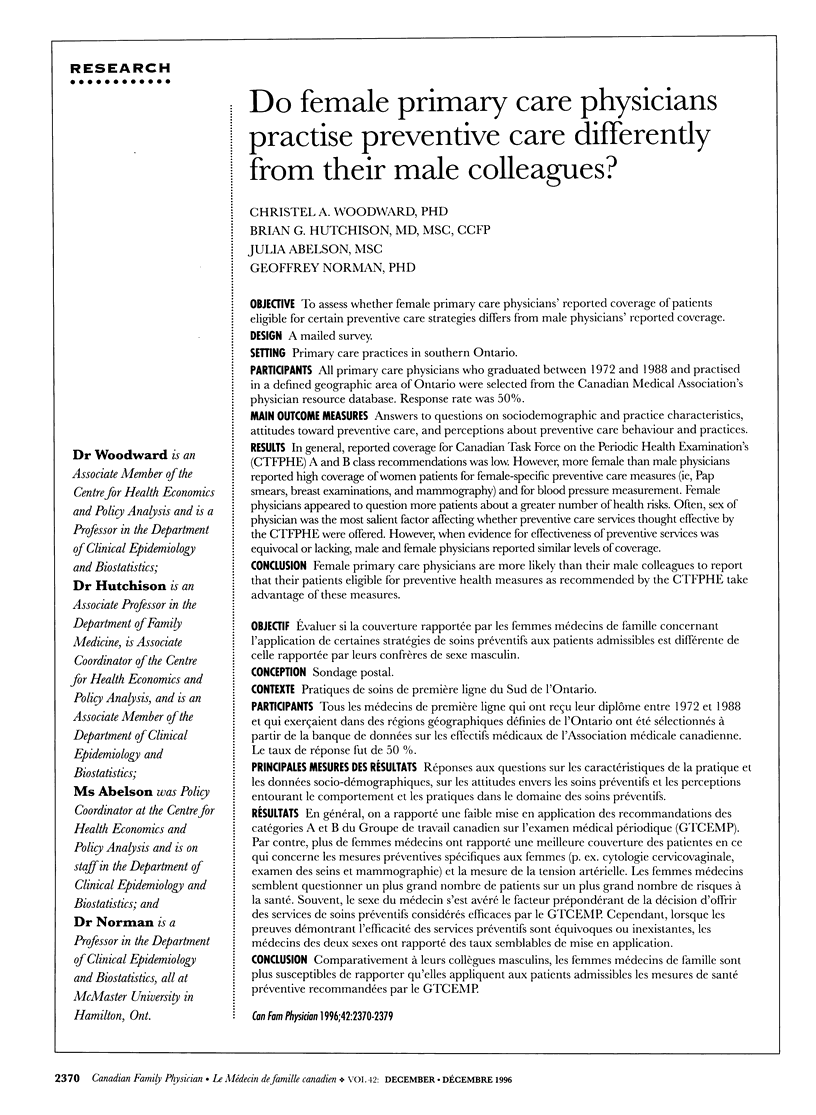
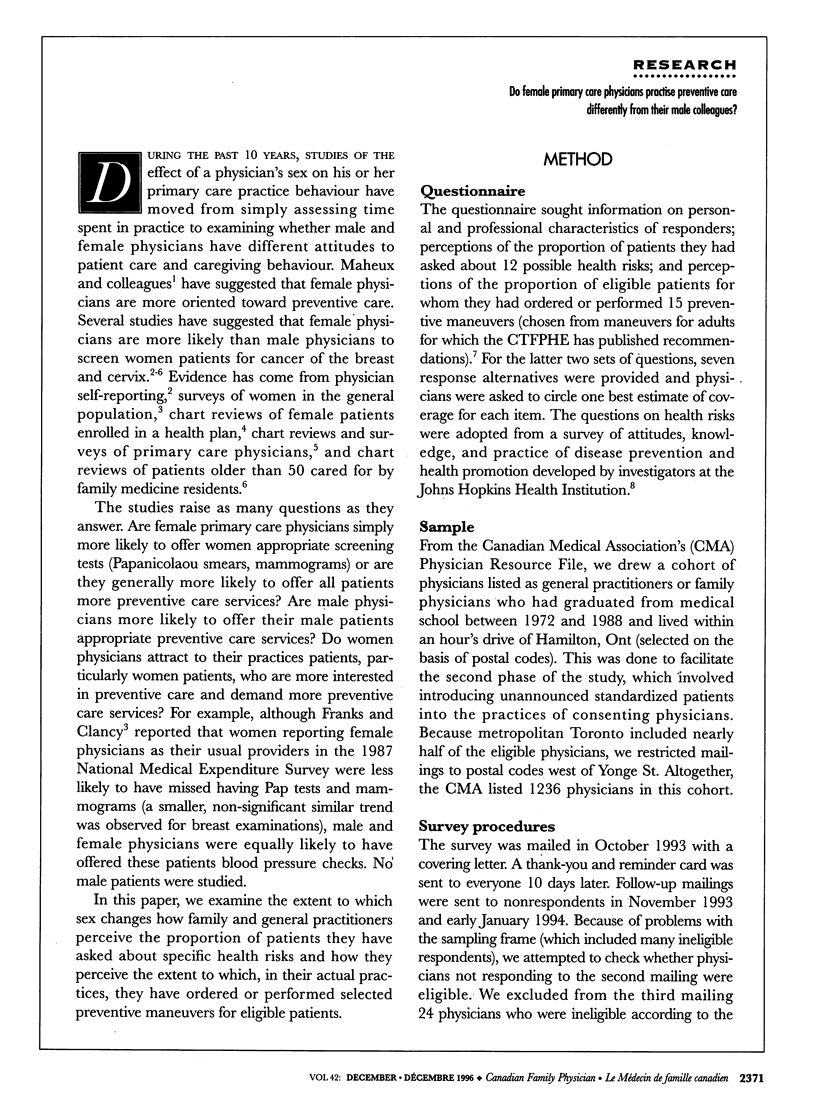
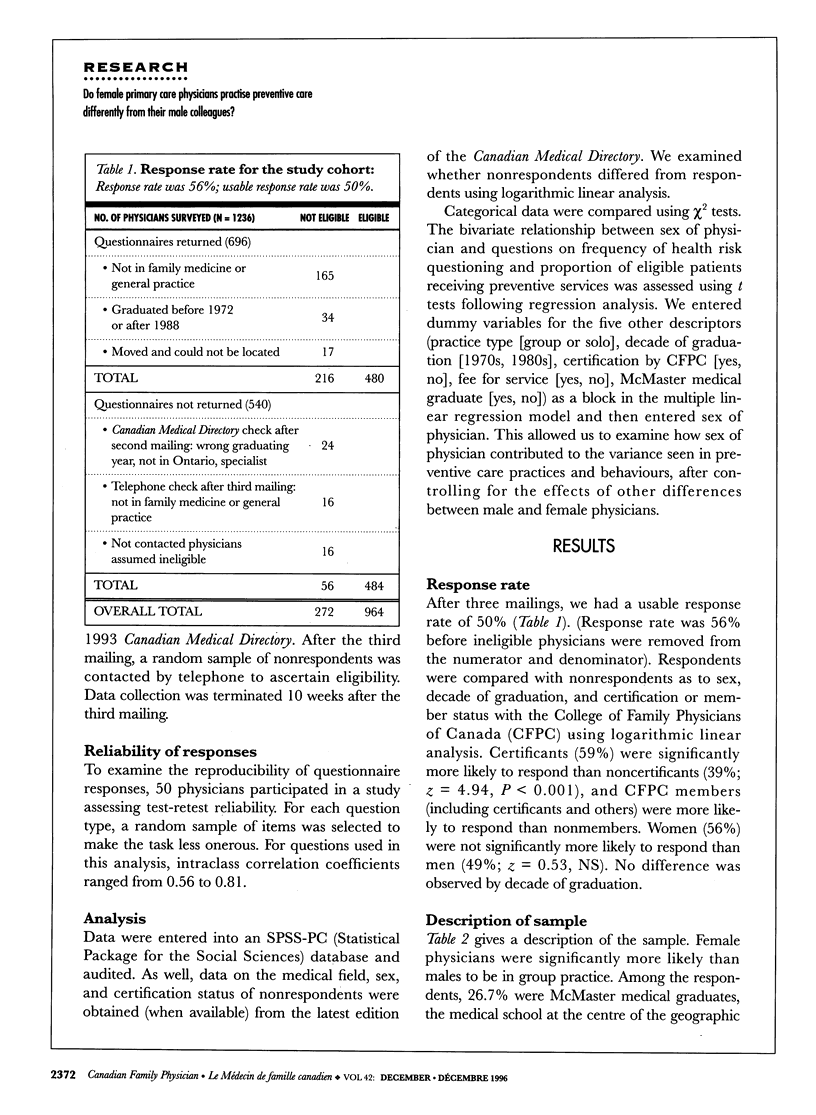
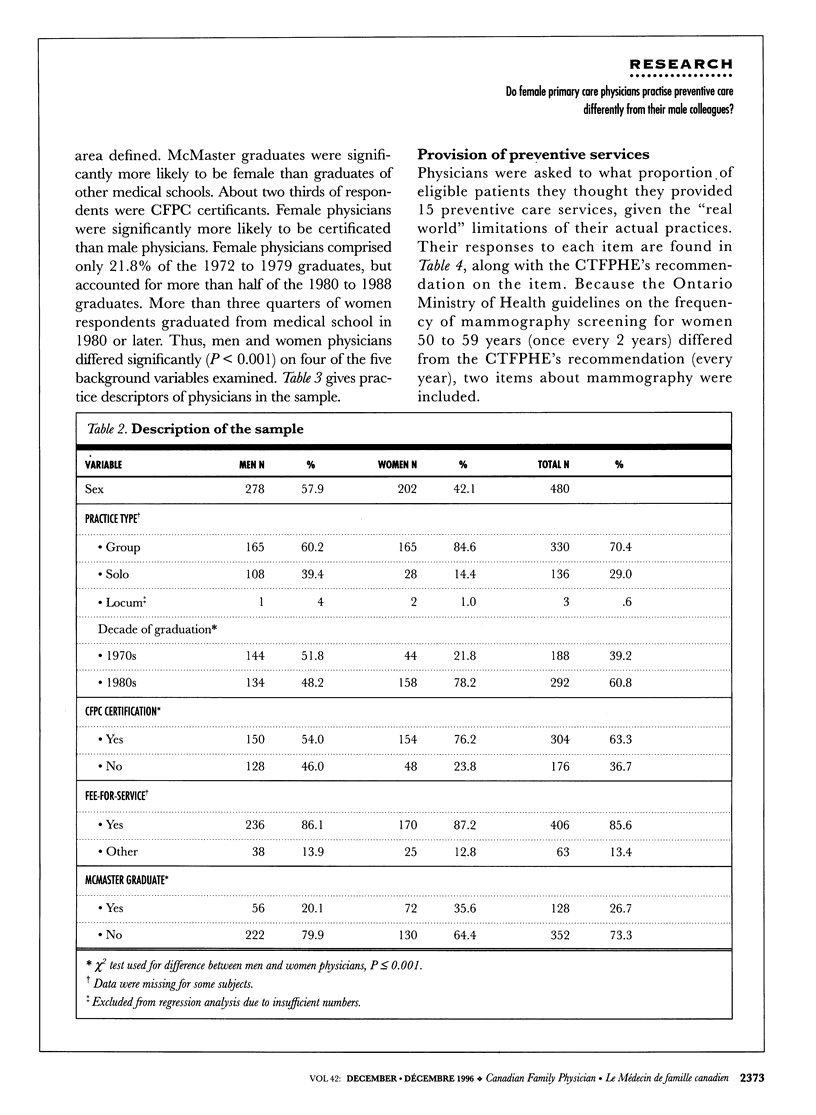
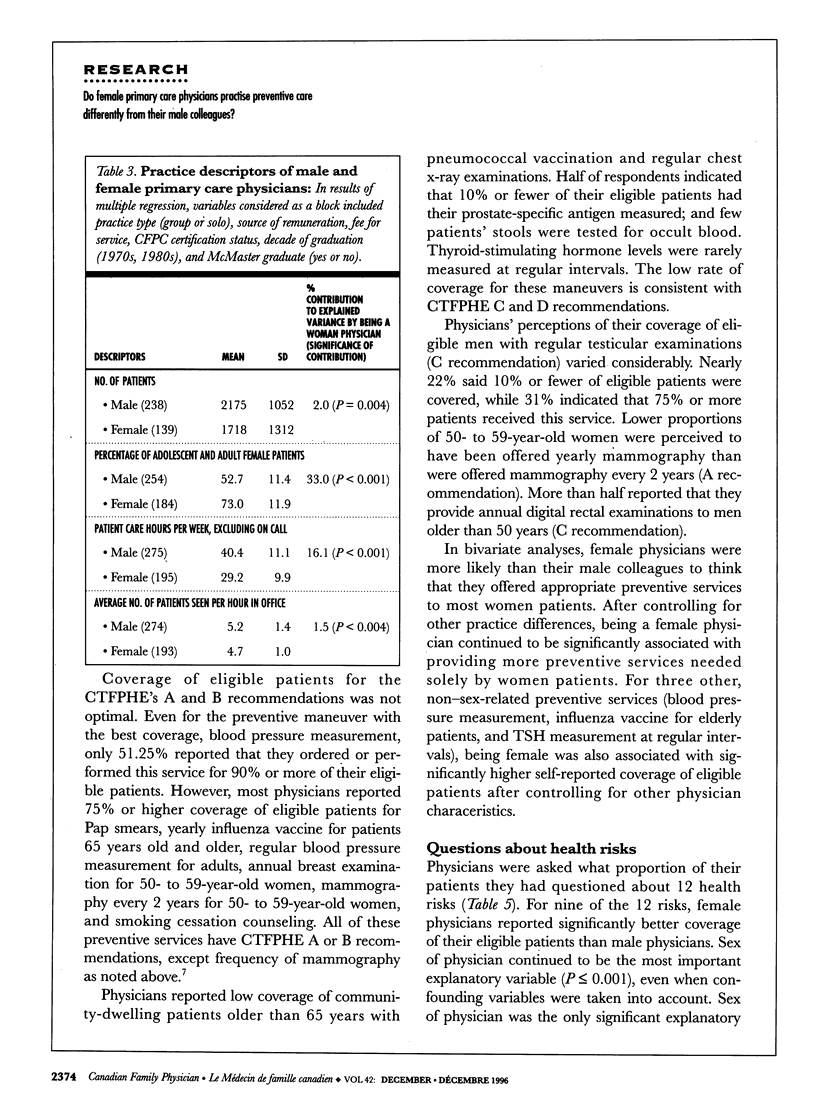
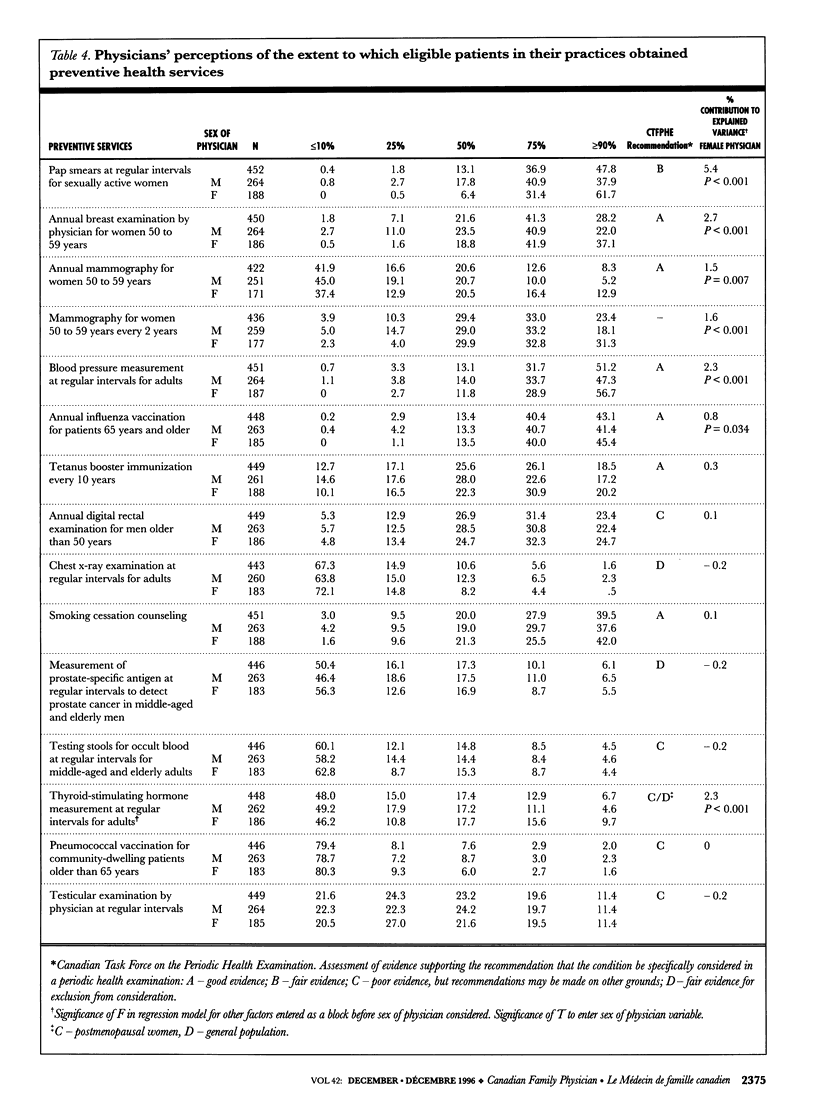
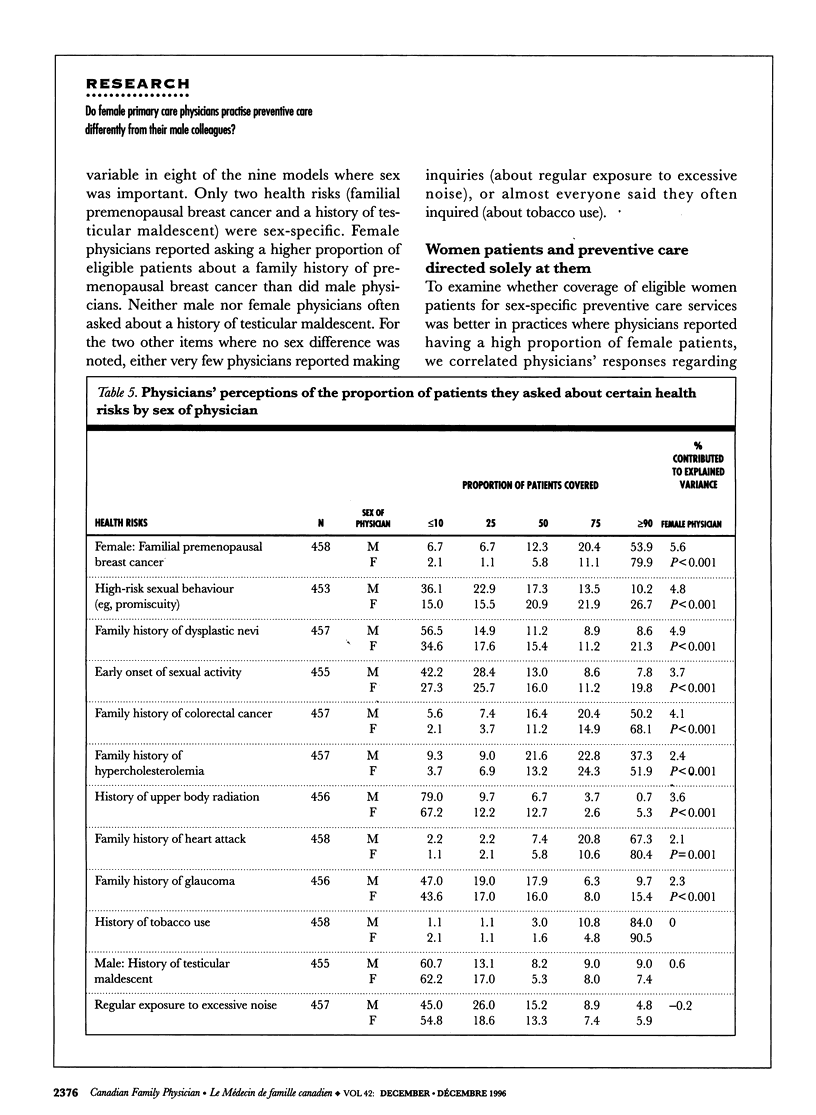
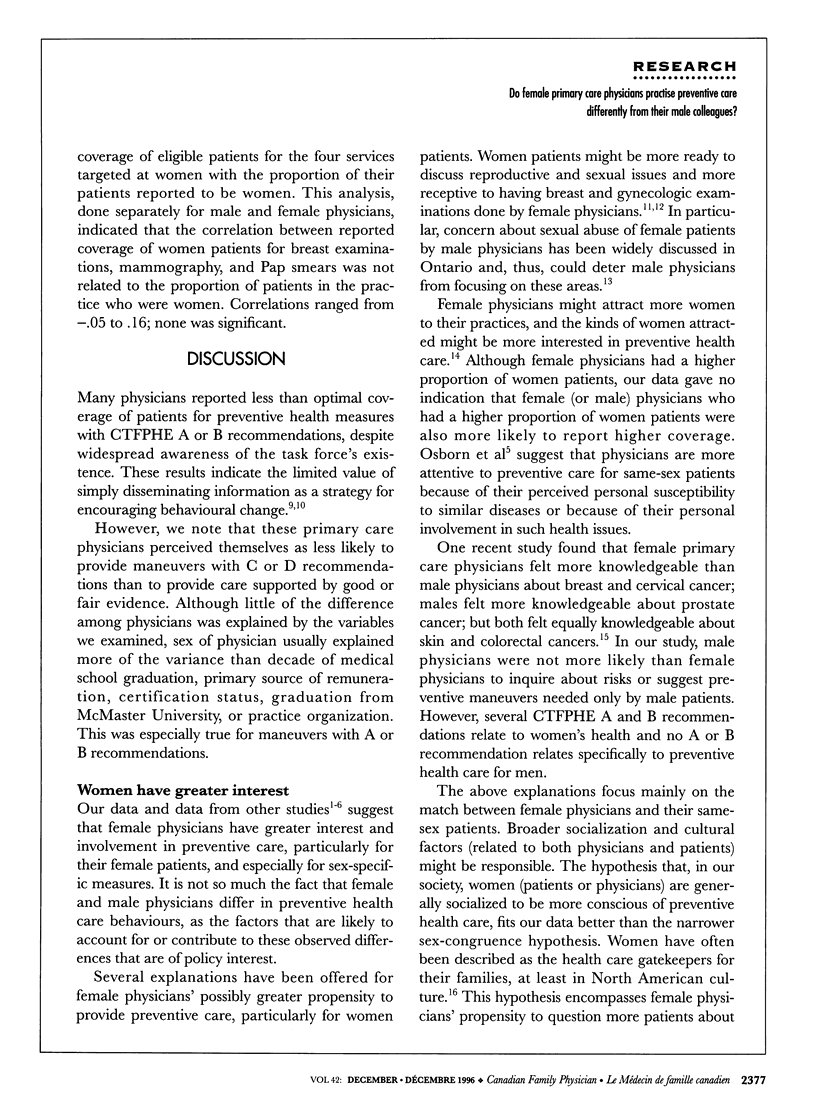
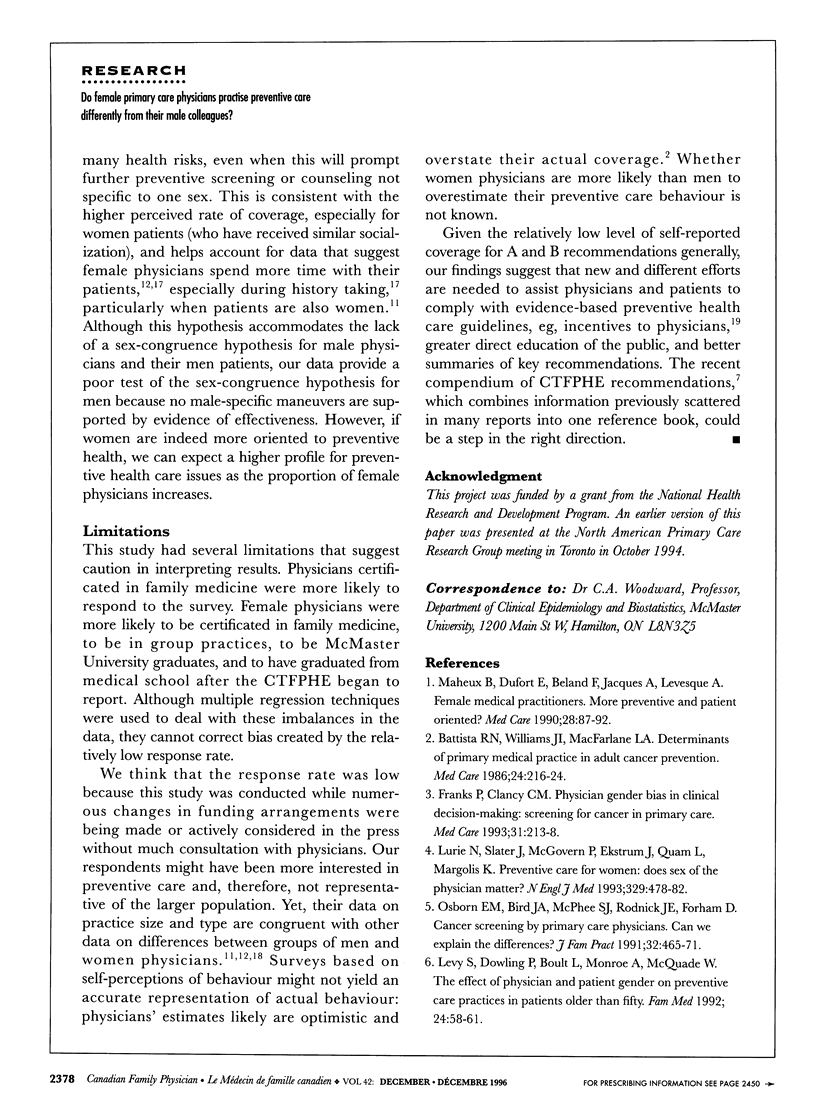

Selected References
These references are in PubMed. This may not be the complete list of references from this article.
- Arnold R. M., Martin S. C., Parker R. M. Taking care of patients--does it matter whether the physician is a woman? West J Med. 1988 Dec;149(6):729–733. [PMC free article] [PubMed] [Google Scholar]
- Battista R. N., Williams J. I., MacFarlane L. A. Determinants of primary medical practice in adult cancer prevention. Med Care. 1986 Mar;24(3):216–224. doi: 10.1097/00005650-198603000-00004. [DOI] [PubMed] [Google Scholar]
- Bensing J. M., van den Brink-Muinen A., de Bakker D. H. Gender differences in practice style: a Dutch study of general practitioners. Med Care. 1993 Mar;31(3):219–229. doi: 10.1097/00005650-199303000-00004. [DOI] [PubMed] [Google Scholar]
- Franks P., Clancy C. M. Physician gender bias in clinical decisionmaking: screening for cancer in primary care. Med Care. 1993 Mar;31(3):213–218. doi: 10.1097/00005650-199303000-00003. [DOI] [PubMed] [Google Scholar]
- Gilbert R., Willan A. R., Richardson S., Sellick S. Survey of family physicians: what is their role in cancer patient care? Can J Oncol. 1994 Jul;4(3):285–290. [PubMed] [Google Scholar]
- Johnson K. C., Ford D. E., Smith G. S. The current practices of internists in prevention of residential fire injury. Am J Prev Med. 1993 Jan-Feb;9(1):39–44. [PubMed] [Google Scholar]
- Levy S., Dowling P., Boult L., Monroe A., McQuade W. The effect of physician and patient gender on preventive medicine practices in patients older than fifty. Fam Med. 1992 Jan;24(1):58–61. [PubMed] [Google Scholar]
- Lomas J., Anderson G. M., Domnick-Pierre K., Vayda E., Enkin M. W., Hannah W. J. Do practice guidelines guide practice? The effect of a consensus statement on the practice of physicians. N Engl J Med. 1989 Nov 9;321(19):1306–1311. doi: 10.1056/NEJM198911093211906. [DOI] [PubMed] [Google Scholar]
- Lomas J. Words without action? The production, dissemination, and impact of consensus recommendations. Annu Rev Public Health. 1991;12:41–65. doi: 10.1146/annurev.pu.12.050191.000353. [DOI] [PubMed] [Google Scholar]
- Lurie N., Slater J., McGovern P., Ekstrum J., Quam L., Margolis K. Preventive care for women. Does the sex of the physician matter? N Engl J Med. 1993 Aug 12;329(7):478–482. doi: 10.1056/NEJM199308123290707. [DOI] [PubMed] [Google Scholar]
- Maheux B., Dufort F., Béland F., Jacques A., Lévesque A. Female medical practitioners. More preventive and patient oriented? Med Care. 1990 Jan;28(1):87–92. [PubMed] [Google Scholar]
- Norton P. G., Dunn E. V., Soberman L. Family practice in Ontario. How physician demographics affect practice patterns. Can Fam Physician. 1994 Feb;40:249–256. [PMC free article] [PubMed] [Google Scholar]
- Osborn E. H., Bird J. A., McPhee S. J., Rodnick J. E., Fordham D. Cancer screening by primary care physicians. Can we explain the differences? J Fam Pract. 1991 May;32(5):465–471. [PubMed] [Google Scholar]
- Roter D., Lipkin M., Jr, Korsgaard A. Sex differences in patients' and physicians' communication during primary care medical visits. Med Care. 1991 Nov;29(11):1083–1093. doi: 10.1097/00005650-199111000-00002. [DOI] [PubMed] [Google Scholar]


